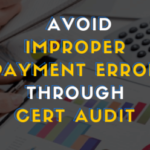How To Make Your CLAIM AUDIT Look Like A Million Bucks?
HME businesses face increasing numbers of pre- and post-payment audits, which can be very stressful and costly events. Without a sound strategy for maintaining accurate and retrievable documentation, an audit request can disrupt operations and put your organization at financial risk.
When an audit strikes, the response must be swift and precise. The best approach to an audit letter is a quick response with proof that all documentation complies with requirements.
Five steps HME providers can take to give a speedy response and make sure all claims are audit-ready include:
1. Give Customer Service Representatives tools to improve intake:
- Knowledgeable customer service representatives at the front end are essential to collecting the right information at the start of service, but staff turnover and constantly changing requirements make it difficult to keep CSRs up-to-date on payer requirements.
- Technology can fill the knowledge gap if it does more than just park the data in a form prompting CSRs to collect specific documentation, which enables correction of the claim before it is filed.
2. Document to payer-specific rules:
- Improve efficiency by helping CSRs collect payer-specific requirements through established validation rules.
- While Medicare rules may call for a document to support specific Healthcare Common Procedure Coding System (HCPCS) codes, other payers may have a looser set of rules for that procedural code, which don’t require the same level of documentation saving time for the CSR.
3. Enable quick response to the audit letter:
- Staff should be able to quickly access the documentation when responding to an audit letter, which is not always easy in the case of long-term service.
- Establishing a link between billing records and the sales order documentation eliminates the risk of error when pulling documentation and ensures the information can be gathered efficiently.
- In addition, advanced HME systems allow users to collect, submit and track documentation electronically in response to CMS audits.
4. Automate document review within the workflow:
- There are times a critically needed product must be delivered before documentation is complete.
- This increases the need for a careful documentation review before submission of the claim to ensure progress notes support medical need and meet requirements.
- HME providers can easily determine whether or not to delay confirmation of a claim until the file is complete and the claim is substantiated by automating the review process throughout the workflow, utilizing optical character recognition technology and installing checkpoints that alert staff to missing or inaccurate information.
5. Capture data on all patient-care related interactions:
- Setting up a process to capture all telephone calls to patients, verbal orders from physicians or communication with other providers is critical, but difficult with the number of people involved in each case.
- Technology that documents actions by time, date and personnel involved provides additional support as an HME provider demonstrates compliance with billing requirements.
There’s no sure way to guarantee you won’t go through an audit; however, by ensuring the good HME business technology is in place you can take on most any audit challenge. With proactive compliance and timely response submission, audits can be resolved and claims are paid faster leading to improved cash flow.
Don’t wait for an audit Make every claim audit-proof from the start and For more information email us at support@wonderws.com




